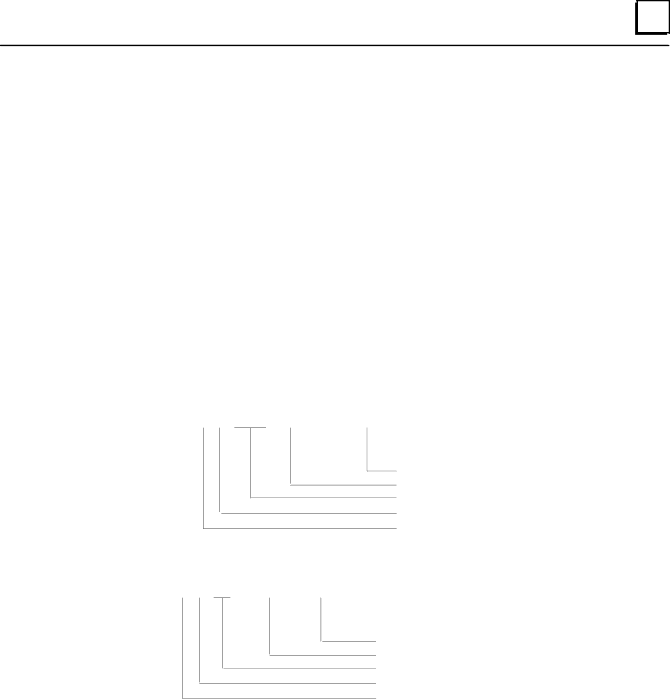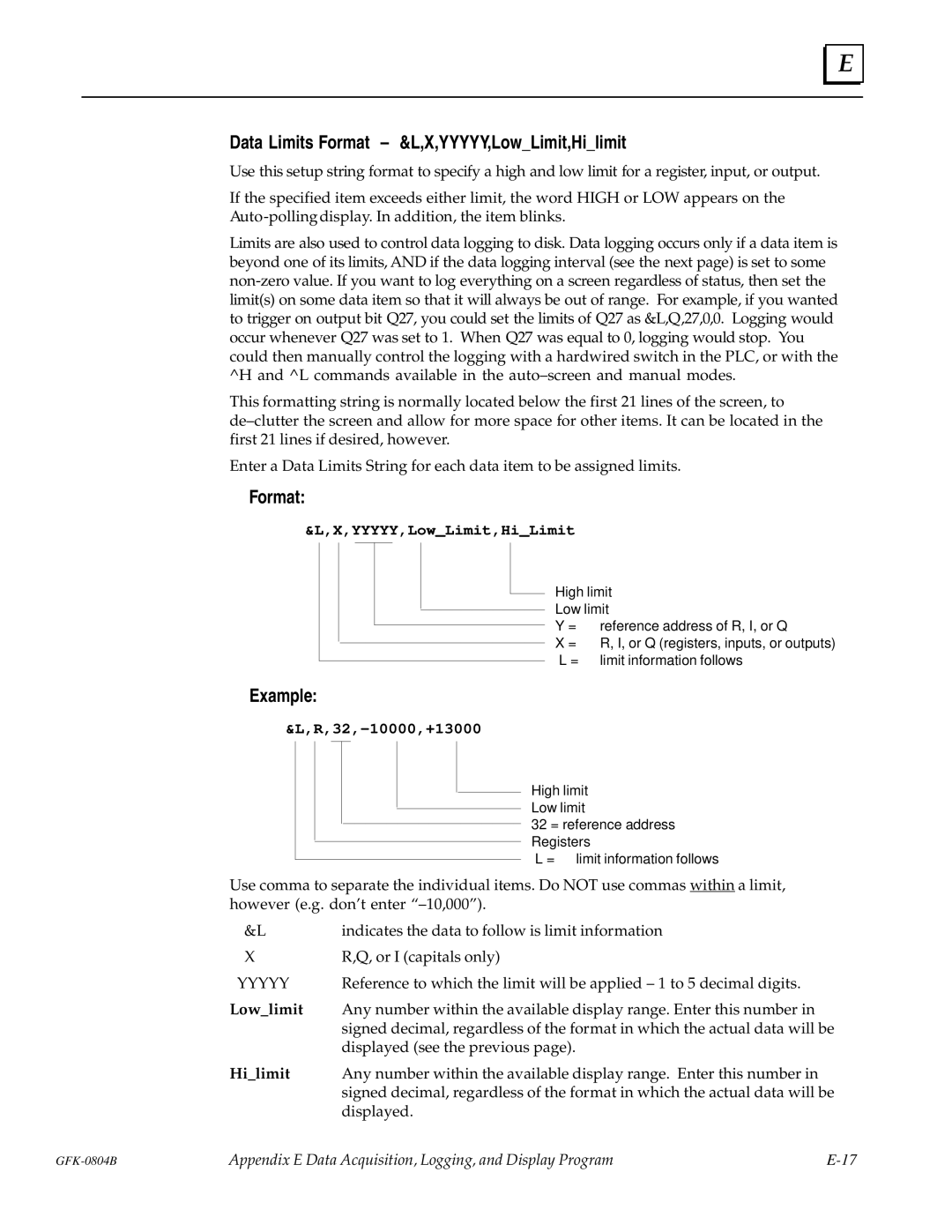
E |
Data Limits Format ± &L,X,YYYYY,Low_Limit,Hi_limit
Use this setup string format to specify a high and low limit for a register, input, or output.
If the specified item exceeds either limit, the word HIGH or LOW appears on the
Limits are also used to control data logging to disk. Data logging occurs only if a data item is beyond one of its limits, AND if the data logging interval (see the next page) is set to some
This formatting string is normally located below the first 21 lines of the screen, to de±clutter the screen and allow for more space for other items. It can be located in the first 21 lines if desired, however.
Enter a Data Limits String for each data item to be assigned limits.
Format:
&L,X,YYYYY,Low_Limit,Hi_Limit
High limit
Low limit
Y = reference address of R, I, or Q
X = R, I, or Q (registers, inputs, or outputs)
L = limit information follows
Example:
&L,R,32,±10000,+13000
High limit Low limit
32 = reference address Registers
L = limit information follows
Use comma to separate the individual items. Do NOT use commas within a limit, however (e.g. don't enter ª±10,000º).
&L | indicates the data to follow is limit information |
X | R,Q, or I (capitals only) |
YYYYY Reference to which the limit will be applied ± 1 to 5 decimal digits.
Low_limit Any number within the available display range. Enter this number in signed decimal, regardless of the format in which the actual data will be displayed (see the previous page).
| Hi_limit | Any number within the available display range. Enter this number in |
|
|
| signed decimal, regardless of the format in which the actual data will be | |
|
| displayed. |
|
Appendix E Data Acquisition, Logging, and Display Program | |||
